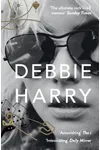Picture a punk rock queen with a voice that could stop traffic and a style that defined an era—meet Debbie Harry! As the electrifying frontwoman of Blondie, Harry blended punk, new wave, and pop with a fearless flair, creating hits like 'Heart of Glass' that still pulse through playlists today. Her journey from small-town dreamer to global icon is a story of grit, glamour, and groundbreaking artistry that reshaped music and culture.
The Making of Debbie Harry
Born Angela Trimble on July 1, 1945, in Miami, Florida, Debbie Harry was adopted and raised in Hawthorne, New Jersey. Her early life was steeped in classic American suburbia, but her heart leaned toward the rebellious. After dipping her toes in the 1960s folk scene with the band The Wind in the Willows, Harry waitressed in New York City, soaking up its gritty creative energy. In 1974, she co-founded Blondie with guitarist Chris Stein, igniting a musical revolution.
Debbie Harry’s Unforgettable Hits
Blondie’s music was a genre-defying cocktail of punk’s raw edge, new wave’s sleek vibes, and pop’s infectious hooks. Their 1978 album Parallel Lines skyrocketed with 'Heart of Glass,' a disco-punk anthem showcasing Harry’s sultry vocals. Autoamerican (1980) delivered 'Rapture,' a pioneering rap-rock fusion that hit No. 1. Harry’s solo work, like the 1981 album KooKoo, explored funk and dance, while her memoir, Face It (2019), revealed her candid, resilient spirit. Her style—bold, eclectic, and theatrical—blended vulnerability and defiance, influencing fashion and music videos for decades.
Beyond music, Harry’s acting career shone in films like Videodrome (1983) and Hairspray (1988), where her charisma lit up the screen. Her work consistently pushed boundaries, merging art forms with a playful yet provocative edge that made her a cultural trailblazer.
Why Debbie Harry Matters
Debbie Harry didn’t just make music—she rewrote the rules. As a female frontwoman in a male-dominated industry, she shattered stereotypes with her unapologetic confidence and genre-blending creativity. Her influence ripples through artists like Madonna and Lady Gaga, who echo her bold aesthetic. Harry’s legacy as a feminist icon and innovator endures, inspiring new generations to embrace their individuality and make their mark.
- Born: July 1, 1945, Miami, Florida
- Key Works: Parallel Lines, Autoamerican, KooKoo, Face It
- Notable Films: Videodrome, Hairspray
- Awards: Inducted into the Rock and Roll Hall of Fame with Blondie (2006)
Ready to rock out with a legend? Grab Parallel Lines or dive into Face It to experience Debbie Harry’s electrifying world!

